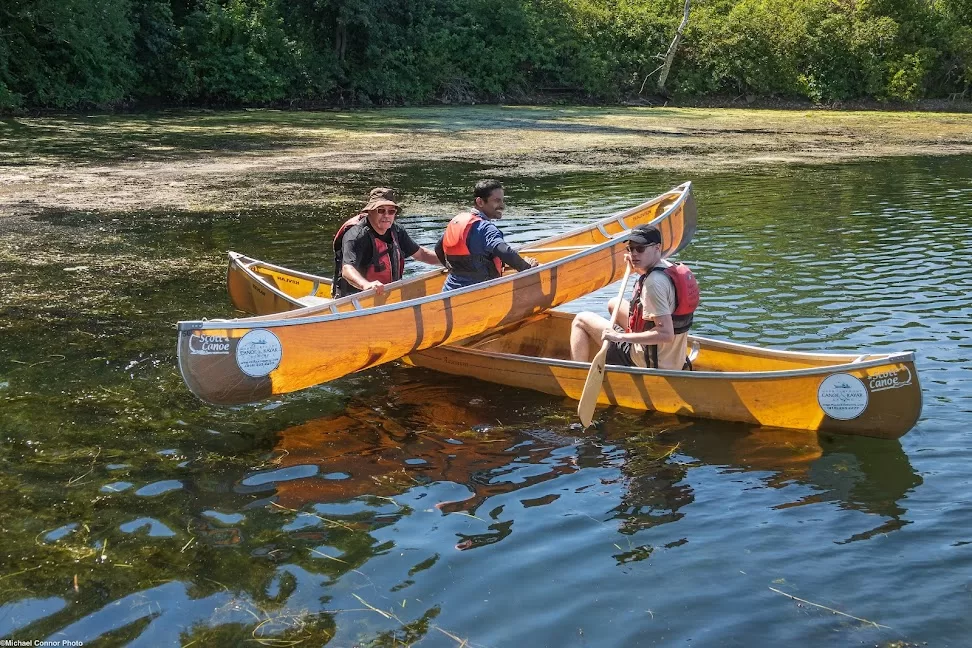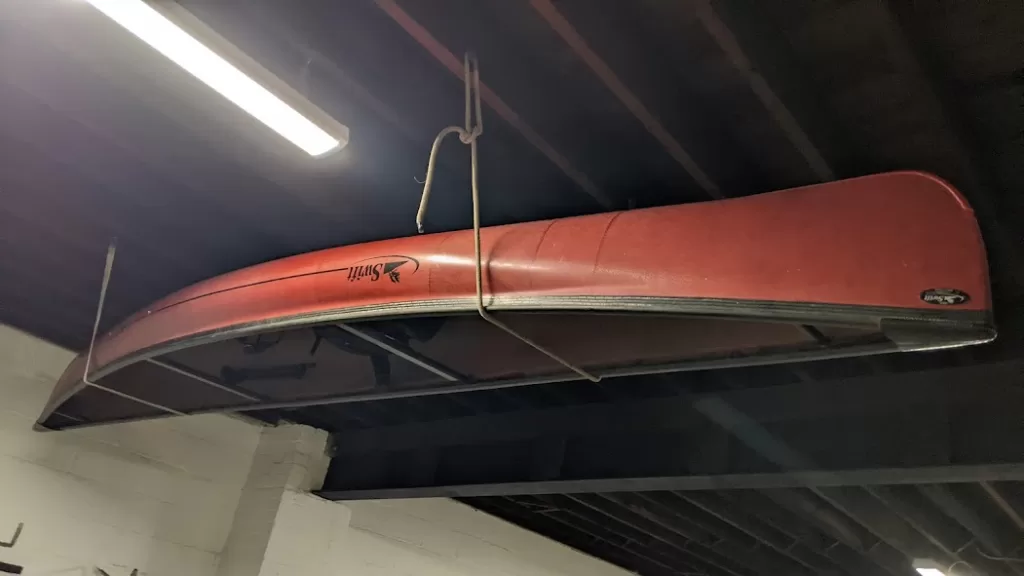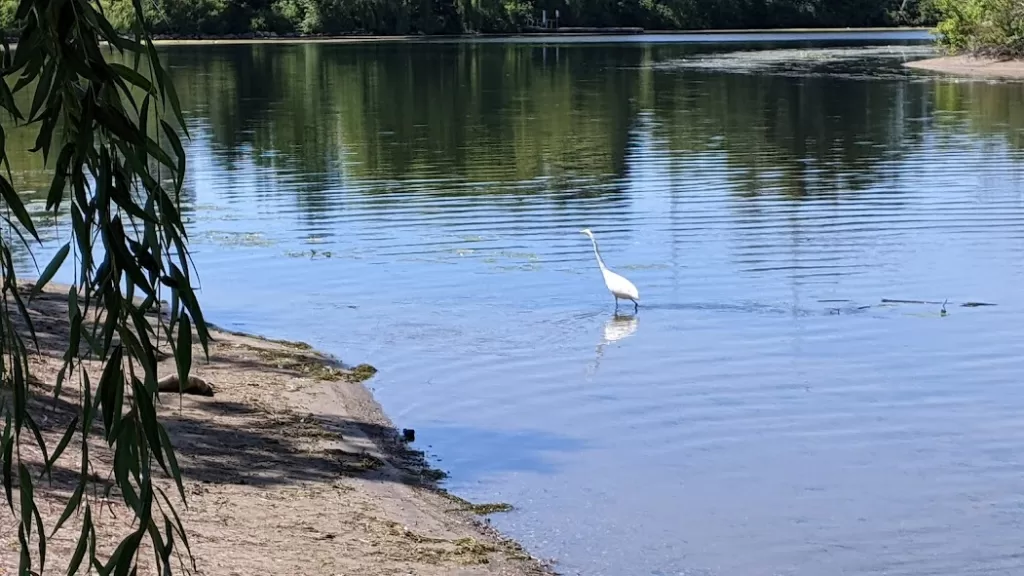Pamela:
Hello, and good day, eh? Welcome to the Super Good Camping Podcast. My name is Pamela.
Tim:
I’m Tim.
Thomas:
And I’m Thomas.
Pamela:
And we are from supergoodcamping.com. We’re here because we’re on a mission to inspire other families to enjoy camping adventures such as we have with our kids. Today, we’re going to turn it over to Thomas and Tim, we’re going to talk a bit about buying a new canoe and about a paddling course that they took recently. Take it away.
Tim:
So we’re joined today by Thomas. He’s going to tell you a little bit about a trip he took to go buy me a solo canoe because I’ve had so much trouble trying to schedule it as a tandem trip and here he is.
Thomas:
Two weeks ago, my dad wanted a solo canoe because schedules don’t always line up for us to be able to do our tandem trips. Fortunately, we found out that Swift was having a really big sale on their rentals, their demo canoes, that sort of thing. So I was sent off to make the trip up to Georgian Bay to pick up one of these canoes. So I grabbed a buddy, threw a whole bunch of camping gear in the back of my truck, and we went up to Orillia. We camped a night there on somebody’s property who was renting it out for campers. And it was actually a really great experience. There was firewood provided for us. We sat around a fire and watched the stars, which you don’t often get to see in the city. We woke up the next morning, bright and early, cruised on over to Swift, and stood in line for two and a half hours with about 60 other people.
Tim:
Sat in line would be fairer.
Thomas:
Yes, we did. We did take chairs, and then I made the quickest purchase in my life. I walked in, I don’t even think it took me a full five minutes to find the canoe that we wanted, grab the tag off of it, head over to the checkout, and get my name on it. Then we grabbed it, threw it on top of the truck, and strapped it down. We stopped by my grandparents’ cottage for a few minutes just to say hi and take a quick dip in the lake and then we headed on home. The canoe was super light. Super easy to throw on top of the truck. I think it weighs a little under 30 pounds?
Tim:
Yeah.
Thomas:
And I was really careful about strapping it down because it’s Carbon Kevlar. You don’t want to snap that, that’s expensive, but it was a good experience. I enjoyed going to pick up the canoe and I’m sure that you will enjoy using it.
Tim:
I’m sure I will. So he picked up a 14-foot Keywaydin I believe is how you say it. It’s a single-seat solo canoe, it was a rental. It’s got a few scratches, but it looks brand new. It needs a yoke. So I’ve just sent the specs to Swift to get a yoke. Not a Carbon Kevlar one because that’s 700 bucks. So I’m getting a cherry yoke because that’s 200 bucks. It’s got a seat in the bottom, as opposed to a web seat, you know that you would sit on.
Thomas:
You sort of sit in this canoe, it’s more kayak style.
Tim:
So I’m gonna have to find myself a double-blade kayak paddle, and I’m looking forward to giving her a shot. It should be interesting. So we have two canoes hanging in the garage now. And that’s all cool. Thanks, Thomas. You’re the best.
Thomas:
I try.
Tim:
There you go. And we’d also like to mention that Thomas and I did a course, was that last weekend?
Thomas:
Yes
Tim:
Jeez, it already seems like a while ago. Down here in Toronto, Harbourfront Canoe and Kayak was the name of the business, Pamela bought me, I think for Christmas, she bought me a gift certificate towards whatever. I looked through the courses, and this would give us some proper training. Neither of us has proper training. We just, you know…
Thomas:
Figure it out.
Tim:
Throw it in the water and start paddling, right? And so I wanted to work on my J stroke in particular. I wasn’t particularly confident about it. It works but I don’t think I’m doing it as well as I should and I wanted to get better at that. And any other strokes that somebody who does that could teach us. I thought it would be great. It’s also preliminary to hopefully next year I’d like to maybe get a level one certification to teach or get to become a better paddler. We just don’t log the hours that a lot of the other enthusiasts do. So Thomas and I went down and took this course. It was an all-day course throughout the Toronto islands. And I’ll let Thomas tell you about it.
Thomas:
So we started off obviously at the Harborfront. Hopped into groups split into two, how many people were there?
Tim:
Eight of us, I think.
Thomas:
Eight of us. Yeah, that sounds right. Split into pairs of two. Each group of four hopped on a pontoon boat. They cruise across the lake over to the Toronto Islands where they keep their canoes.
Tim:
Which is way better than paddling because that was insane down there. On the way back we literally saw a ferry just miss a sailboat or rather a sailboat missed the ferry because the ferries run their path and you just don’t go in there. It couldn’t have been 10 feet, oh that could have gone so badly. And they’re just insane. There was an inflatable thing out there somebody was paddling around and you could barely see it in the chop. People are just wackos. Nobody using their brain. Darwinism at its finest. Anyhow.
Thomas:
They store all their canoes over on the Toronto islands. We got there and pulled the canoes out. I think they were Carbon Kevlar?
Tim:
Yep, yeah.
Thomas:
10 canoes, what 16s?
Tim:
I think they were 16s, they felt a little bit smaller than ours.
Thomas:
Throw them on the water, got in, and started out with the instructor watching how we already paddle.
Tim:
Shout out to Michael. He was awesome. He was great.
Thomas:
He was great. He would throw out some pointers here and there. He would chat about whatever. He was good fun to have. And then he started showing us different paddles, different strokes. Here’s how to do this one. Here’s how to do sculling…
Tim:
Sculling, pry, dry and draw, that Jay stroke which he called something else because he thinks it’s a misnomer, which it is. Totally fair.
Thomas:
Right. The Canadian.
Tim:
The Canadian. Okay, cool.
Thomas:
Yeah, because in the UK canoes are referred to as Canadian canoes and they call kayaks, canoes.
Tim:
Yeah, because they’re whacked, whatever.
Thomas:
We stopped for lunch on the island, and that was nice. We got to sit under a tree.
Tim:
We saw lots of wildlife too. We saw a heron, egret, turtles, and two other birds that I don’t know, but are sort of, you know, egret-style. Cormorants. Lots of dead trees from cormorants. Here’s today’s factoid. The trees in and around where cormorants nest die because the cormorants are really good fishers and their poop is so acidic that it literally burns the tree. So there you go. That’s why there are dead trees. Anyway, there were cormorants and lots of poop.
Thomas:
Yeah, we got lots of paddling in, and we learned some. We learned a better way to tandem carry a canoe because previously we had just thrown it straight over the top of both of us. And then neither of us can really see much in the way of straightforward. But now we’ve figured out that we can throw it over one shoulder, and the other person throws it over the opposite shoulder to balance it out. That way you get a good view forward and to one side and the other person gets a good view forward and to the other side.
Tim:
Because we have walked full tilt into a tree before!
Thomas:
Yep, and that did not go well.
Tim:
There was a little bit of braining going on there. Oh, what were the rescues?
Thomas:
Oh right, we learned how to fall out of a canoe and how to get back in. We learned how to help other people get back in.
Tim:
Yeah, flip their canoes over, empty the water, let them get into their canoe once it’s been righted, etc. And then what was the last one we did?
Thomas:
Oh, right. We figured out how to get somebody into their canoe while it was on our canoe and slide it off our canoe into the water.
Tim:
Right. So they actually climbed into our canoe, then we pulled their canoe up on top. Then they climbed into that canoe, and then we gave them a shove and away they went. It was pretty neat. We had an interesting discussion with Michael about rescues. I asked specifically because what we’re talking about here are two canoes with two paddlers in each. Although, it’s possible one of those canoes could have one paddler. I keep thinking about what Thomas and I do. We do just the two of us and we’re not out with anybody else, and we often don’t run into anybody for days. Or now that I’m looking at potentially doing solo backcountry trips, what do you do for a rescue for that? And Michael said, “you know what? If you’re 100 yards from shore, you swim to shore. If you’re 300 yards from shore, maybe you’re in trouble. Maybe you shouldn’t have gotten in over your head.” And you know what, that’s a pretty valid point. Stuff happens, but it’s really important to try to stay aware of the conditions around you and try to paddle within your ability. Don’t go that far out.
Thomas and I are just about to set out on a French River trip. I think the river part will be just fine, we’ll avoid rapids because I don’t think my game’s that good. I’ve literally never done them. We’ll see what we spot. We’ll scout some stuff out, but there is going to be a portion of the trip that will be somewhat dodgy. We’re gonna have to do it early, early, early in the morning to avoid the winds but we have to sort of scoot across the shoreline of Georgian Bay. Georgian Bay is remarkably unpredictable and big winds and big waves can come up very quickly and be big. So we are going to paddle, I don’t care if it adds five kilometres to our trip, we are going to paddle the shoreline the whole way so that should something happen, we capsize, we’re close and we can get in. Everything will be in waterproof bags so that we don’t lose it. There you go. I had hoped to learn how to rescue ourselves. We learned how to rescue other people. And we were reminded that we need to be smarter…
Thomas:
More mindful of what’s going on if we are not paddling with another group.
Tim:
Heads up, man, heads up.
Thomas:
Yep.
Tim:
Cool.
Pamela:
That’s it for us for today. We hope you enjoyed this episode on buying a new canoe and taking a paddling course. Please do join us for future episodes coming up every two weeks. Please do reach out to us on Instagram, Facebook, and Twitter, and email us at hi@supergoodcamping.com. And we’ll talk again soon. Bye.
Tim:
Bye
Thomas:
Bye




So, to introduce myself, I’m the “Tim” character of the post you just read. And , by “character”, I mean that my name is Tim.
This is the first blog post of one of our podcast episodes that I’ve read. Pretty cool! Thumbs up to Pamela for doing all that work. You’re the best Babe!
Thanks for checking us out. You can find our audio podcasts on all the platforms – Spotify, Apple, Google, etc. You can find video versions on our YouTube channel. And you can check out our cool pictures on Instagram & Facebook.
Thanks for checking our content out! Chime in and share your thoughts. We love to hear from everybody. 🙂
No, he really means that he is a character! Signed, the Pamela character. 🙂